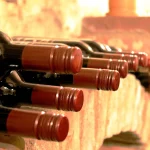As Novac/Jozo Vrdoljak writes, women prefer red wines, sparkling wines and rosé wines significantly more than men. This was shown by a study of sociodemographic and individual characteristics of Croatian wine producers and consumers, first conducted in Croatia. The research was conducted by doctors of science, economist Djuro Horvat, psychologist Katarina Sokic and agronomist Robert Brkic.
Although a total of more than half of Croatia’s consumers prefer white wines, a third opt for red, while rosé and sparkling wines are preferred by two to five percent of consumers, it is different for women: it is interesting that 67 percent of men and 40 percent of women prefer white, and 42 percent of women and 26 percent of men red wines. Women are more frequent consumers of rosé and sparkling wines, while an equal number choose predicate wines – 3.5 percent of men and 3.6 percent of women.
“It’s likely that women have a different choice because of the fuller, stronger and sweeter, often fruity taste that these wines have. White wines are perceived as sour and harsher, which, of course, often doesn’t correspond to the truth, but such a perception is common,” explains Katarina Sokic.
More educated and wealthier consumers
Within the project entitled “The influence of motivation, preferences and emotions of producers on success in wine production, branding and marketing”, whose holder is the Effectus study of finance and law – University of Zagreb, a study of sociodemographic and individual-emotional and motivational characteristics of good Croatian wine producers and consumers was undertaken. The study of wine consumers included 570 participants: 318 men and 252 women.
The frequency of consumption shows that most participants consume wine several times a week, and a fifth of them doing so on a daily basis. In terms of frequency of consumption, there are significant gender differences among everyday consumers: 29 percent men and only eight percent women.
Sokic notes that in addition to the demographic, socioeconomic and psychological characteristics of wine consumers, it is very important to establish contextual factors of consumption, because in this way the offer can be adjusted to consumer needs, “especially because wine consumption is far more emotional than it is rational. According to our results, 62 percent of respondents cannot imagine festive moments without drinking wine. Almost as many think that wine improves mood and reduces tension. It is obvious that consumers associate wine with emotions, both positive and negative ones. For example, a third of them believe that in a state of sadness and disappointment it is best to drink a glass of wine. Finally, wine is sung about in many sad, love songs,” points out Katarina Sokic.
The research showed that more than half of wine consumers are highly educated. Wine consumers, as many as 70 percent of them, mostly rate their financial situation as mediocre, and as many as 24 percent perceive it as being somewhere above average.
Consumers and their preferences
There is a significant positive association between belonging to a particular wine region by birth and preference for a particular wine region. Consumers, 33 percent of them, are most inclined to the good Croatian wines of Slavonia and the Croatian Danube region, while for 40 percent of the participants the geographical origin of the wine isn’t important. The preference of Slavonian wines is also noticeable among those consumers who belong to other wine regions by birth. It is interesting that only those consumers – 74 percent of them – who by birth belong to the region of Slavonia and the Danube region prefer good Croatian wines from this region, while the percentage of consumers who prefer wines from other Croatian wine regions to which they belong by birth is much lower.
“The price is extremely important for making business decisions of strategic and tactical importance for good Croatian wine producers. Having a balanced price-quality ratio is a key factor in choosing wine for 34 percent of respondents, so we can conclude that price is very important in today’s market economy and for consumers. Significantly, 60 percent of the respondents don’t regret spending money on good Croatian wine, which means that the price of wine must be consistent with its basic features and characteristics, strongly correspond to its quality, design, packaging and faithfully reflect the productivity of wine producers through the cost, and the end result is consumer satisfaction,” Horvat points out.
Socio-demographic factors explain the importance of the percentage of variance in the emotional experience of drinking wine and attitudes towards good Croatian wine, namely 13 percent relates to experiences and 17 percent relates to attitudes.
General sociodemographic factors such as age and gender are significant predictors of the emotional wine drinking experience that links wine consumption to comfort and relaxation. Age, place of birth, status in terms of assets and preferences towards certain wine regions are also significant predictors of attitudes towards good Croatian wine.
For the latest travel info, bookmark our main travel info article, which is updated daily.
Read the Croatian Travel Update in your language – now available in 24 languages.
Join the Total Croatia Travel INFO Viber community.











